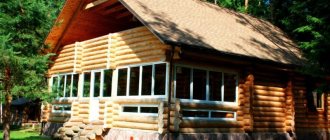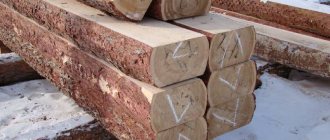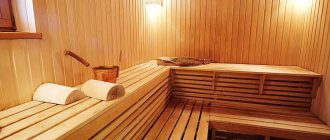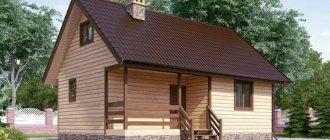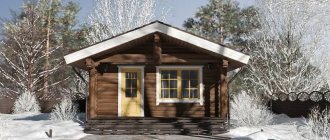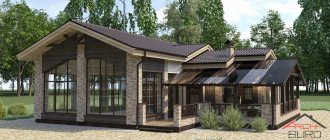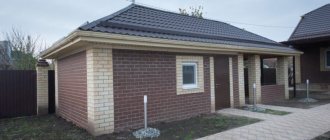The unique sulfur baths with natural thermal springs are one of the most popular attractions of the Georgian capital, this is its symbol, its heart. People in Tbilisi like to repeat the words of the poet Joseph Grishashvili that visiting Tbilisi and not visiting the sulfur baths is the same as visiting Paris and not seeing the Eiffel Tower.
I will not contradict traditions and will go to explore the Tbilisi baths to share my impressions with you and provide the most up-to-date information.
The history of the appearance of hydrogen sulfide baths in Tbilisi
According to a well-known legend, the city of Tbilisi owes its appearance to sulfur springs. The name of the city itself is derived from the Georgian word “tbili” (in the old pronunciation “tfili”), which translates as “warm”.
It is believed that the first springs were discovered in the 2nd half of the 5th century by King Vakhtang Gorgasali while hunting in the vicinity of the Tsavkisistskhali River. Now it flows through the Botanical Garden and further under Aliyev Square. The legend of the king and the falcon is the most popular story of the appearance of the city. The pheasant shot by the king fell into one of the springs, and, according to one version, was miraculously healed, according to another, it was boiled. One way or another, this place made an indelible impression on the king and he decided that the capital of Georgia should be moved here. He left Mtskheta as the religious center of the country, and made Tbilisi the center of state power.
The earliest baths found by archaeologists date back to the 1st-2nd centuries. Even then, there was a ceramic pipeline with the help of which the pools carved into the rock were filled, and changing rooms were equipped around them. In the 16th century, indoor baths were erected, which were richly decorated with mosaics in the then Persian fashion. Over the centuries, the buildings were repeatedly destroyed, rebuilt, and changed their appearance.
In ancient times, hydrogen sulfide baths in Tbilisi were the center of the city's social life. They worked around the clock and here people not only washed and rested, but also discussed the latest news, shared relevant information, and resolved business and domestic issues.
The sulfur baths of Tbilisi are not such harmless entertainment as it might seem at first glance. The water here is very hot, the temperature at the outlet of the source exceeds 40°C, and its chemical composition is extremely rich. The hydrogen sulfide content in water ranges from 50 mg/l to 150 mg/l.
This is a fairly powerful remedy that helps with skin problems, promotes detoxification of the body, stimulates the vascular system, improves blood circulation, and has a positive effect on joints and cartilage tissue. Hot water normalizes the functioning of the nervous system, strengthens the immune system, tones, regenerates and restores strength.
What to see in the Abanotubani area
Waterfall coordinates: 41.68676, 44.80903.
One day, having overflowed its banks, the river flooded all the baths and killed many people - for this reason, in Soviet times, it was driven into a pipe. Several decades ago, it was again allowed to follow its original course, and the banks and surrounding area were reclaimed and turned into a picturesque pedestrian area.
Once upon a time, the residents of these houses came to the river bank to wash clothes, but now comfortable paths have been laid along the riverbed, very popular among Tbilisi newlyweds.
They owe their “peaceful coexistence” to the Soviet government, which destroyed the Shiite Shah Ismail Mosque, once located near the Metekhi Bridge. Previously, the Shiite and Sunni halves of the Juma Mosque were separated by a curtain, but now everyone prays together.
We suggest you familiarize yourself with How to make a stove for a bath
Juma mosque coordinates: 41.68719, 44.81019.
On the opposite side of Abanotubani, closer to Kura and Gorgasali Street, is the monastery of the Forty Sebastian Martyrs, named in honor of 40 soldiers of the Roman XII “Lightning” Legion, located in the city of Sebastia (modern name Sivas) - for their Christian religion they were left to die of hunger and cold on the ice of the lake. In Russia, their memorial day (March 9) is known as “Magpies”.
Monastery coordinates: 41.6889, 44.81023.
Across the road from the monastery, between it and the sulfur baths, there is a pleasant small square of Heydar Aliyev, with a monument to the former president of Azerbaijan.
Sulfur baths - contraindications
But to prevent the medicine from becoming poison, you need to observe the measure. You can stay in the bath for about 15 minutes, then you should take a break for 5-10 minutes. The recommended number of cycles per session is no more than four.
If you have problems with the cardiovascular system, then you should be very careful in the bathhouse. It is strongly recommended not to exceed the time spent in the bathhouse and swimming pools to avoid overheating. Sulfur baths in Tbilisi are contraindicated for asthma, stomach ulcers, liver and kidney pathologies, tuberculosis and cancer.
Useful tips
- Bathing accessories (towel, slippers) in all baths are provided for a fee, but you can bring your own.
- The cabin rental time is usually limited to one hour, which is quite enough. Four immersions in hydrogen sulfide water are enough for the full effect.
- It is best to choose the evening time to visit the bathhouse - after the procedure, pleasant exhaustion sets in, and its best continuation is healthy sleep. This is what the locals usually do.
- Evening time in any bathhouse usually needs to be booked. It is best to do this during a personal visit, after first making sure of the quality of the service. Reservations are made only upon full payment.
- For those who are on vacation and have time, the morning hours are also quite suitable. The water may be too hot, but there will be fewer people, and you will be shown all the cabins that you can choose according to your taste.
Tbilisi sulfur baths - description and recommendations, personal experience, reviews
According to some sources, in different historical periods there were up to 60 sulfur baths in the city. About 10 complexes have survived to this day, most of them were built during the 17th century. to the 19th century
The area where the best sulfur baths in Tbilisi are located is called Abanotubani. This is a very unusual atmospheric place with a characteristic landscape that is unlike anything else. The main part of the baths is located underground in semi-basements. Only their roofs are located on the surface of the earth - they are round domes made of bricks with small turrets on top.
Through small arched windows, scant sunlight enters the premises. Previously, this was the only lighting in the baths, but today they are fully illuminated with electricity.
- The baths have common rooms, which are divided into men's and women's, and there are individual rooms. The public baths have sections with and without steam rooms, a swimming pool and showers with hot sulfur water and a relaxation room. Individual rooms can be rented for recreation by a group of 2 to 15 people. Each bathhouse has its own set of options; I will discuss each of them in detail below.
- Additional services include rejuvenating peeling with a special “kiso” washcloth, massage, at the entrance you can rent bath accessories, purchase detergents - shampoo, soap in disposable packages, as well as hot tea and other alcoholic and non-alcoholic drinks. Almost all baths have common rubber slippers.
- As a rule, the time spent in all public halls is not limited - you can sit there all day long. The baths are open from 7.00 am to 21.00 pm. Individual rooms in the baths are available around the clock; it is better to make an appointment in advance to be sure to get in.
- There is a strong smell of hydrogen sulfide inside all baths. At first it literally knocks you off your feet, but after 5-10 minutes you get used to it and completely stop noticing it. After the visit, the characteristic smell remains on the hair and body for some time, but then disappears.
- The higher the temperature of the water, the more healing it is. In hot water, hydrogen sulfide is most active; it penetrates through the skin and lungs into the body and has a beneficial effect on it. Before the bath, you need to wash yourself well - through clean skin, beneficial substances are absorbed much better.
- Hydrogen sulfide neutralizes most harmful microorganisms. But if you pay special attention to hygiene, then it is not a bad idea to take into account that the water in the pools is not changed often - as a rule, on the night from Sunday to Monday. Therefore, the best time to visit the bathhouse is Monday morning. In addition, in the morning the water in the pools is often hotter than in the evening. And if you decide to order a bath attendant, then make sure that he takes a fresh washcloth.
- An important recommendation: before visiting the bathhouse, you must remove all jewelry, especially silver. Hydrogen sulfide oxidizes silver, it instantly turns black and then is almost impossible to clean.
Before going to the Tiflis baths for the first time, I conducted a survey among my acquaintances and friends from Tbilisi to find out which one they considered the best. Almost unanimously everyone called the Orbelian bathhouse.
Opinions were divided regarding the second place in the ranking. Some called the bathhouse “King Erekli”, others preferred “Gulo”, several people recommended “Bathhouse No. 5”. Still, there were more votes in favor of Gulo, so I decided to visit her and Orbelianovskaya. Since the common rooms in the baths do not differ much in price and surroundings, I was interested in comparing individual rooms.
Orbelianovskaya bathhouse
It is also called a “motley” or “blue” bathhouse. As soon as you get to Abanotubani, you immediately pay attention to it - it stands out among all the others, both externally and internally. This is the only above-ground bathhouse, similar to an eastern Arabic building, covered with beautiful bluish mosaics. Traditionally, the baths were run by Azerbaijanis, so this design is not surprising.
At the entrance there is a sign with a saying of the great Russian classic Alexander Pushkin, who, after visiting the sulfur baths, said: “I have never seen anything more luxurious than the Tiflis baths.” In addition to Pushkin, Alexandre Dumas once visited this bathhouse, and today two individual rooms bear the names of these famous guests.
This bathhouse is truly the best in terms of service, room design, level of staff and other parameters. If you want to relax in comfort and in a pleasant environment, then this is definitely the place for you. But it is also the most expensive - for 1 hour of visiting this bathhouse I paid 120 GEL (about $47). For one person this is quite expensive, but if you come with a group, the price tag will look much nicer and will be affordable for almost everyone.
The rooms are impressively decorated, using beautiful oriental motifs. The locker room is separated into a separate room and is hermetically sealed. This is important because it allows things to remain dry, which is not the case in other bathhouses. The complex has a spacious, comfortable hallway with upholstered furniture, where you can relax during breaks between the pool.
Unlike other baths, there are no rubber slippers here, but at the reception you can buy disposable ones, their cost is 2.5 lari ($1). Please note that they are quite slippery and uncomfortable to walk on wet floors, so it is better to bring your own slippers. If necessary, you can also get towels, sheets, and buy soap at the reception. The cost is also 2.5 GEL.
The room is very warm, it’s hard to stay in it for a long time, it gets hot and you want to freshen up. The water in the pool is hot, not everyone will be able to sit in it for 15 minutes - I lasted about 12-13 minutes. However, it seemed to me that it was easier to enter this pool than the Gulo bathhouse. Maybe because in the Orbelianovskaya bathhouse the temperature difference between air and water is less.
Guests can enjoy a large and varied menu of drinks and snacks; orders can be made by phone. Prices for soft drinks are slightly higher than the city average - about $3-4. I can’t say anything about the quality of the food - I didn’t order anything. Conveniently, they call you 15 minutes before the end of the session and warn you about it.
Gulo
The entrance to this bathhouse is located a little to the side, it is inconspicuous and fewer tourists visit it. Therefore, as a rule, it is easier to get here during the hot season. The bathhouse is famous because it was visited by the British singer Sting during his visit to Georgia. Ask the administration what room he stayed in and if you are lucky, you will be able to book exactly that one.
One must assume that if Sting had arrived now, it is unlikely that he would have been taken to this bathhouse. But in those years, the Orbelian bathhouse was under reconstruction and Gulo was one of the best. Surely, the successful secluded location and convenient access to the building also played in its favor.
Prices in Gulo are much more affordable than in Motley, and in order for the comparison of these two baths to be correct, I chose one of the best and most expensive rooms in Gulo. A hall with two pools, hot and cold, cost me 70 lari (about $26).
Almost immediately upon entering, it became clear that this bathhouse was noticeably inferior to the mid-level room in Pestraya (Orbelianovskaya). The room itself is quite spacious, but its decoration is rather modest, despite the presence of a beautiful mosaic panel on the wall behind the pool.
The locker room and the hall in it are one room. If you come with a group of friends of different sexes, then changing clothes will not be very convenient. The only separate room is the toilet, but it is located at the end of the room, next to the pools, and you will have to go to it in street shoes.
If you visit the bathhouse during the cold season, the room may be quite cool. When I visited this bathhouse, it was the beginning of December, the air temperature outside was about zero degrees, and the windows in the domes were broken. The cold outside air was blowing into the room, making the pool water feel very hot. It took at least 3 minutes to completely submerge in the water. At the same time, very sharp sensations arose - the body seemed to be electrocuted, the skin was covered with goosebumps. Re-entering the pool is much easier.
But it was much easier to stay in the pool for the required 15 minutes than in the Orbelian bathhouse. After the hot water, it was very pleasant to immediately move to the adjacent pool with cold, refreshing water. Surely in the summer it is much easier to enter a hot pool with hydrogen sulfide water, and it is even more pleasant to plunge into a pool with cold water.
Bath accessories can be purchased as a set, which includes a towel, sheet and shampoo. Cost – 5 lari (about $2). There are general rubber slippers inside.
After visiting your room, you can relax in the common lounge on comfortable soft sofas. If necessary, you can cool down, dry your hair, drink tea or water. In the cold season, this is very convenient, since immediately after a bath it is not a good idea to go outside while steaming.
Bath of King Erekle
This bathhouse is located opposite Orbelianovskaya, behind the bridge. There are only 4 rooms, each with a swimming pool. But the interior decoration of the rooms in the “Tsar Erekle” bathhouse did not impress me - there was something elusive Soviet in their design. Therefore, I would put it in third place in the ranking of the best baths in Tbilisi.
The undoubted advantage of these baths is the prices. Here they are much more democratic than in the two described above, but the interior and decoration of the rooms are very modest. If you don’t want to overpay for large rooms and the ambience in the form of marble walls with mosaics is not important to you, and at the same time you don’t want to go to shared rooms - feel free to go here. The room will cost you 30-50 lari ($12-19).
Bathhouse No. 5
One of the most famous, mainly because it is cheap and convenient. It has a large common room, 2 suites and 5 private rooms with swimming pools. The bathhouse itself is divided into the sulfur bathhouse 5 and the “VIP bathhouse”. Separately, there is a regular sauna and a massage table, the cost of a massage is 10 GEL (about $3.5), and you can bargain. For some tourists, the bathhouse attendants charge 2-3 times more - don’t be provoked, it’s not worth that much.
The price of staying in a common room is 3 GEL (a little more than $1), individual rooms will cost from 55 to 80 GEL (about $20-30). The rooms are small and not fancy in design. The common room is filled with the flavor of the Soviet era, since which time no significant reconstructions have been carried out in the bathhouse. Women, perhaps, should not come here - there is no sulfur pool in the women's room, only a shower, so exercise will not be complete.
VIP bath
VIP sulfur bath is the most expensive pleasure. It only has a common room, the cost of staying in which is 150 lari per hour (about $57). It is considered the most prestigious, where the city elite and celebrities hang out.
Banya Mirzoeva
This is the only bathhouse in which the women's common room has a pool with sulfur water, it costs 2 lari (less than $1). The bathhouse itself is practically no different from the others, except, perhaps, for the increased size of the common rooms. Located in a shabby building on the street. Grishashvili.
There are several more baths - Sumbatovskaya, Bebutovskaya, Kazennaya, Banya No. 7 (or Boheme), Tsarskaya (or Royal). They are less popular, but each has its own contingent of admirers. Before visiting any bathhouse, you can go in and look around, read the price list in order to make a decision where to stay.
When visiting an individual room, there is no algorithm of actions, but if you decide to spend time in the common room, then the following awaits you. After you have decided on the choice of bathhouse, you need to go inside, go to the ticket office, and buy a ticket. Then you need to go down the stairs to the department you need, where an employee will meet you, check your ticket and show you a locker where you should put all your clothes. The locker is securely locked, the key remains with the bathhouse employee, so you don’t have to worry at all about the safety of your belongings. Then you go to the bath room, where you first take a shower, and only then can plunge into a pool of hot sulfur water. If desired, you can order peeling or massage.
Preparing for bath procedures
The locker room is located downstairs. Bathhouse attendants and service personnel are also located there. They need to show the ticket. The visitor is provided with an iron locker for storing things. The key remains with the guest. They may also offer additional services, such as massage.
Shower
There are shower facilities in the common rooms of the sulfur baths. They attract attention by the absence of a classic watering can. The water flows in a continuous stream. This is one of the highlights of Georgian baths. In the shower, you need to wash yourself well before diving into the pool.
Sulfur baths
Sulfur pools or baths are why thousands of tourists come to Georgia. They are filled with water with a high content of hydrogen sulfide. Therefore, there may be a specific smell of sulfur in the room. It is recommended to dive into the pool 3–4 times per session for 10–15 minutes. The optimal time for a bath is an hour.
There is no swimming pool in the women's section of bathhouse No. 5. Instead, a shower with healing water is used.
Some complexes provide classic steam rooms and saunas. But they are considered attributes of an additional service and are not popular.
Massage
Clients are offered massage after bathing. It is divided into two stages:
- Rubbing the client with a camel washcloth and soap.
- Classic massage.
After the procedure, the skin becomes smooth and silky. As for the second part, its quality depends entirely on the massage therapist. Georgian massage is as unpredictable as the temperature in a sulfur bath. The photo shows a massage in a sulfur bath in Batumi.
End of procedures
After completing the procedures, visitors feel refreshed. Depression, fatigue and bad mood dissolve in healing springs. Lovers of foamy drinks and delicious food can continue their relaxation in nearby restaurants and bars. The restaurant serving Ossetian cuisine, located next to bathhouse No. 5, is very popular among bath attendants.
Sulfur baths in Tbilisi – official websites, addresses, contacts
In the summer, during the high season, there is an unprecedented rush in the baths. I advise you to book rooms at least a day in advance, because at the time of your request, most likely, all individual rooms will already be occupied, and you will not be able to comfortably visit the sulfur baths in Tbilisi.
Not all bathhouses have an official website . But if they exist, they serve more of a decorative function. Most often it is impossible to make a reservation through them, so it is better to do it on the spot. At the same time, you will be able to personally see all the options for the baths and rooms offered, as well as try the water temperature.
Below are the details of the most popular baths, with current contacts and price ranges:
- Orbelianovskaya bathhouse – st. Abano, 2. Phone: +995. Website: www.chreli-abano.ge. Room prices range from 50 to 150 GEL, two VIP rooms for 300 and 500 GEL.
- Gulo – Grishashvili St., 5. Phone: +995, +995 577 588 122, +995 599 588 122. Website: www.thermal.ge, www.facebook.com/tbilisithermalspa. The cost is from 30 to 200 GEL, the most popular numbers cost 70-80 GEL.
- Queen's bath (or "Bohemia") - st. Grishashvili, 11. Phone 24. Website https://bohemabath.business.site/. Cost – from 60 to 150 GEL.
- Tsarskaya (or “Royal”) – st. Abano, 2. Phone: +995 322 721 066. Website https://www.facebook.com/samefoabano/. Cost – from 65 to 120 GEL.
- Bath of King Erekle – st. Abano, 2. Phone: +995. There is no common room, room prices range from 30 to 50 GEL.
- Bathhouse No. 5 – st. Vakhtang Gorgasali, 3. Phone: +995. Common room – 3 GEL, offices 55-80 GEL.
In addition to them, in the Abanotubani area there are several more baths - VIP bath, Mirzoeva Bath, Sumbatovskaya, Bebutovskaya, "Bakhmaro" (or "Garrison"). All of them are compactly located within one block and getting around them all takes 5 minutes.
Verified excursions
In order not to risk taking excursions from the “best guides” of Georgia somewhere on Freedom Square. No, we are not against it, but it will not always be an associate professor of history or at least a person who knows the real facts. You may be dissatisfied for a lot of money.
Therefore, we recommend using the Tripster service, where all guides have ratings and real reviews from people. In addition, you will be able to plan your day in advance and familiarize yourself with the excursion program. It's convenient, reliable and no more expensive than on the street. Payment is made on the website, so no one can deceive you either.
Here is the current selection for Tbilisi:
We look for cheap flights every day HERE
How to get to the baths
You can get to the Abanotubani area by taxi, public transport or on foot. It is located in the very heart of Tbilisi, opposite the Gorgasali monument, near the Narikala fortress, Meydan and the Peace Bridge. You can easily determine the right place by the characteristic stone domes of the baths protruding from the ground.
Buses No. 31, 44, 50, 55, 71, 80 and 102 go here, the name of the stop is “Abanotubani”. You can arrive by metro – the nearest stations are “Liberty Square” and “Avlabari”. From Avlabari station go closer. The approximate cost of a taxi from the periphery of the city to the sulfur baths will be about 10-12 lari (about $4).

